Review for Kill La Kill: Part 1 - Collector's Edition
Introduction
So there I was, doing my timorous orphan Oliver thing again, cap in hand, penitently approaching an ominous Harry Secombe of an anime distributor, all to whimper fearfully for some more anime to review. “More, MORE!” they bellowed, before adding, “Oh, all right then, have some.” After all, I was asking for the first instalment of Kill la Kill, which needs to be reviewed almost as much as I need to review it. It seemed I would fall at the first hurdle though, when review discs weren’t forthcoming (anime offices can be chaotic at the best of times, and just before Christmas isn’t exactly the best of times), but sometimes providence can be most accommodating. All the Anime sent me the retail version of Kill la Kill Part 1 instead. That’s the Collector’s Edition, and when you talk about Collector’s Editions, it’s not just about content, it’s about size, and weight, and sturdiness too. The Kill la Kill Part 1 set weighs 480 grams. In comparison, 2 Blu-rays in a standard Amaray weigh 100 grams. I bet you have the same question as I at this point. Just how good is half a kilogram of anime? Full disclosure though... I got the retail version of Kill la Kill Part 1 that was prepared for MCM Comicon, and which thereafter was discovered to have an English dub sound sync problem in one scene in one episode. All the Anime pulled the run, delayed the release, all in time to fix the issue, so when Kill la Kill Part 1 goes on general sale, it will be completely fixed. Also, if you bought it at Comicon, and the sync bugs, you can get it exchanged too.
Why the thrill for Kill la Kill though? I wasn’t all that eager to watch it the first time around, the premise was out there, and the anime comes from the people who did Gurren Lagann. Studio Trigger who created Kill la Kill was started by former Gainax employees, and just like Gurren Lagann, Kill la Kill does for its genre of high school battles cum magical girls what Gurren Lagann did for its. Kill la Kill is a reinvention of shows and stories like Ikki Tousen, Tenjho Tenge, and Crows Zero, where high schools are venues for student rivalries and battles to the death, driven down (usually martial arts) club lines, where the status quo is upset by a maverick transfer student, who challenges the suzerainty of the toughest student in school (always the head of the student council). Kill la Kill maxes out the animation, the parody, the deconstruction, the humour, and throws in a talking sailor school uniform that bestows superhuman powers in the process. I’m not a fan of Gurren Lagann, even though I appreciate what it accomplished, and I was expecting the same po-faced self-referential over the top insanity from Kill la Kill. That isn’t what I got from it at all when it was streamed. Instead I saw something wholly hilarious and out there, although mainly down to one character, Mako Makanshoku. I’ve been aching to get my hands on this show to see if it’s just as good as I remember it to be.
Satsuki Kiryuin has her plans for world domination well in hand. After all she’s the head of the student council at Honnouji Academy, a school around which a city revolves. That may not seem like much, but when the school uniform can literally bestow superpowers upon students that she deems worthy, and when she plans to send Honnouji students across the country to do battle with rival schools, then her power grab doesn’t seem so outlandish. It’s all down to the Life Fibre, imbued in the school uniform. 10% Life Fibre creates the 1 Star uniforms, 20% the 2 Star, and 30% the 3 Star, any more than that invites loss of control.
It all seems to be going so well for Satsuki Kiryuin and her Elite Four, then a loud and undisciplined transfer student named Ryuko Matoi arrives, wielding half a pair of giant scissors, and with a chip on her shoulder. She wants to know just who it was that murdered her father, the owner of the other half of those scissors, and seeing as Satsuki recognises the blade, she’s just jumped to the top of her suspect list. There’s not a lot that a no-Star transfer student can do against the wearers of the Goku uniforms. But Ryuko’s father left her a powerful legacy, a school uniform woven from 100% Life Fibre, Senketsu. But Satsuki’s got a legacy too...
The first 9 episodes are presented across 2 dual layer Blu-rays from All the Anime. Kill la Kill is being released in the US by Aniplex US over 5 volumes. All the Anime must know where some Aniplex skeletons are buried, as they managed to twist their arms into allowing the UK release over 3 volumes.
Disc 1
1. If Only I Had Thorns Like a Thistle
2. So Sexy She Might Pass Out
3. Junketsu
4. Dawn of a Miserable Morning
Disc 2
5. Trigger
6. Don’t Toy with me on a Whim
7. A Loser I Can’t Hate
8. I’ll Wipe My Own Tears
9. A Once in a Lifetime Chance
Picture
Kill la Kill gets a 1.78:1 widescreen transfer at 1080p resolution. You might have been wondering why just 9 episodes are split across two dual layer discs, where companies like Funimation happily put that many on just one, but once you see the results you’ll understand why. Kill la Kill looks nigh on perfect, and for all but a few sticklers, it may as well be. The image is clear and sharp, colours come through without flaw, and there is absolutely no sign of compression, no aliasing and certainly rare in HD anime, no banding whatsoever. For those who keep an eye on bitrates, Kill la Kill averages in the mid-twenties, and peaks around the high 30 Mb per second range. And that’s for an animation that isn’t exactly pushing the budget, or stretching the limits of the format resolution. In many ways Kill la Kill is a cheap and cheerful show; with simple character designs and animation, and not a lot of complexity in the world design either. Mako Makanshoku is a masterpiece of simplicity, while the uniformity of the background characters isn’t limited to their apparel.
But the way the animation is implemented, even in the more static scenes, with lens flare and imaginative framing, keeps the show feeling dynamic, while the budget really comes out in the action sequences, fast paced and energetic, and able to draw the viewer in. There’s also a lot of visual imagination in the comedy, lots of sight gags, little Easter eggs of humour in the background of some scenes, and don’t be surprised if you skip back and freeze frame more than once to catch something you missed the first time.
The images in this review are kindly supplied by the distributor, and may not be representative of the final retail release.
Sound
You have the choice between DTS-HD MA 2.0 Stereo English and Japanese, encoded at 1.5 Mb per second, with translated subtitles and a signs only track. Those few videophile sticklers I mentioned would probably balk at the fact that the audio and subtitle options are locked, meaning you can’t watch the episodes without subtitles. That’s probably the concession that was made to Aniplex to allow fewer volume releases. Also, it seems that All the Anime are on the way to solving the multiple on screen subtitle caption problem that usually plagues anime discs authored in the UK, as I certainly saw two captions on screen at any one time, when two conversations were going on simultaneously.
They haven’t quite cracked the signs and subs problem though, and for Kill la Kill, with its plethora of massive on-screen Japanese signs, they’ve compromised by creating burnt in English signs that overlay the Japanese text. Again videophiles will balk at not being able to see the original video as intended, but if it means that the show is watchable, the subtitles accurately timed and comprehensible, and the signs translations are unobtrusive, then that’s a compromise I’m happy to live with. It also means that they can do one thing that you can’t with player generated signs, they’ve given the text translations a small degree of animation to match the animation of the original text, and it really does help them blend into the show. Anyway, other than the odd typo, the subs and signs are accurately timed, and legible throughout.
As for the audio, I went with the original Japanese track, and it was good enough, with the dialogue clear, the action coming across well, and the show’s music allowed to drive the story. It’s all balanced adequately, but the volume level is a touch on the low side, easily remedied. I gave the English dub a try for half an episode, and the show actually gets the dub it deserves, with all of the main characters cast well, including to my surprise, Mako. She’s a unique character with a unique voice, and the danger was that the English version would just be an imitation; instead the English Mako is a distinct character that captures her enthusiastic ditziness while having her own identity too.
Extras
How does a sturdy artbox sound to you? It matches standard Blu-ray dimensions in two directions at least, so it will fit on shelves with most collections. It’s relatively free of logos, with great artwork of Ryuko Matoi at the front, and Satsuki Kiryuin at the back and a chibi-Ryuko on the spine. The blurb and BBFC logos go on a card band that slips over the box.
Most of the package’s mass comes from the Kill la Kill Storyboard and Key Art book. It’s a soft cover, but hefty 188-page artbook, which offers pencil sketches of key art, and the storyboards for the show’s opening and closing credit sequences. If you’re interested in animation and how it is done, then this would be like manna from heaven for you.
The 2 Blu-ray discs come in a digipack that simply flips open, again with Ryuko and Satsuki artwork on either face. The discs too get Ryuko and Satsuki artwork on their labels, although there’s an error in episode count on the discs. Disc 1 actually gets 4 episodes, while disc 2 gets 5, not vice versa.
Both discs get animated menus, and on disc 1 you’ll find the textless credits in the bonus features. Disc 2 offer textless credits again, the same opening, as well as the ending for episode 7. Something noted on the band, but not present on the discs are the Web Previews.
Conclusion
When Kill la Kill was first broadcast, it elicited the kind of fan fervour that hasn’t really been seen since Gurren Lagann. Attack on Titan might be the mainstream breakout hit, but the discerning niche aficionado knew that his bread was buttered on the Kill la Kill side. Kill la Kill does the whole genre deconstruction and re-invention for high school rumbles and magical girls, which Gurren Lagann did for the shonen and giant robot genres. I actually prefer Kill la Kill to the latter, as it’s fully aware that it’s a parody, plays on the fact, and indeed the fourth wall may as well be a chain link fence, and the characters all have wire cutters. It also reignited the fan fervour for cosplay, and indeed cosplayers, in a way that hasn’t been seen since GL’s Yoko was such a popular, bikini clad character. With Ryuko and Senketsu delivering on some serious underboob, and Satsuki not exactly modest herself when wearing Junketsu, medics had to be on standby at conventions for sudden nosebleed clichés. But the bottom line is, that Kill la Kill is just so much fun!
It’s a fairly standard story on the surface, that anime trope of battling high schools that turns up every once in a while. This time though the stakes are higher, with Honnouji Academy striking forth to conquer the whole of Japan through defeating its high schools, and you’d expect the world as well. And when Honnouji Academy sits in the centre of its city as a castle, its rules and whims dictating how the city is run, how its citizens live, then for a school to conquer the world really does mean ultimate power. At the head of the school is Satsuki Kiryuin, head of the student council, looking down on humanity as a bunch of clothed pigs, and using her power to recreate the world in her vision. That’s done through the power of the Goku uniforms. In this world, there is the mysterious Life Fibre, which conveys strength and ability to all who wear clothes fashioned from it. And so the school uniform varies in strength from no-star to 3-star, indicating the Life Fibre content within. Satsuki decides who gets to wear the uniform, depending on what level of club activity a student partakes of. Club members get 1 star uniforms, club presidents 2 star, and Satsuki’s own four Elite generals get 3-star uniforms. Thus her army grows.
Her intricate plans are thrown into chaos when a student transfers in, carrying half a pair of giant scissors, looking for the owner of the other half. Ryuko Matoi wants to find the killer of her father, only the head of the student council can’t be accommodating; she has an aloof and tyrannical reputation to sustain. Naturally there’s going to be a fight. But without a uniform, Ryuko doesn’t have a chance. Fortunately, her late father’s legacy was Senketsu, a school sailor uniform made of an unprecedented 100% Life Fibre. And so the battles begin, as Ryuko tries to fight her way through the school clubs to get to Satsuki, and learn what she knows about her father’s murder. But if she ever gets there, she’ll still have a mountain to climb, as it turns out that Satsuki has Junketsu, another 100% Life Fibre uniform.
There’s more than just this going on though, as the Nudist Beach insurgent group have misgivings enough about Life Fibres to mount a resistance against Satsuki, and their leader, Mikisugi works undercover at the school as a teacher. It was he that first pointed Ryuko in the right direction to find Senketsu, and pops up every now and again to offer sage advice.
That’s the set-up, which could conceivably be played as a po-faced action show, but Kill la Kill is practically overflowing with comedy, the fourth wall, merely the first casualty in its efforts to entertain, with the giant screen captions part of the action and scenery, not just expository interludes. The characters are all wacky and bizarre, Mikisugi is a musty old teacher with a dry voice, but the more he removes his clothes, the more he becomes a dashing leader of an insurgency. Whereas you might expect the clubs that Ryuko has to battle to be of the martial arts kind, they are often more mundane, with the most martial being the boxing club, but she also has to fight the tennis club, the knife throwing club, the automotive airsoft club, the origami club, the Nanjing lily club and more. Senketsu actually has a voice, and talks to Ryuko as a partner. So a cute, sailor uniform has a butch, manly voice, an eye patch over one breast, and a masochistic side (he likes being ironed). There’s also copious fan service. Junketsu and Senketsu’s powers are activated when they drink the blood of their wearers, which gives Ryuko a degree of anaemia and a time limit on her battles, at least at first. When powered up, they transform from innocuous school uniforms to the most salacious bondage gear imaginable (with aforementioned under-boob), and the transformation sequence is over the top, breasts flapping in the wind, ridiculous. The whole thing is played with one eye on the parody, wholly for laughs, but keeping the tension and excitement high when it comes to the action as well.
If that isn’t enough, there’s Mako Makanshoku and her family of loveable deadbeats. Her father is a back alley doctor, her brother a pickpocket, while she’s a hyper-enthusiastic ditz. There’s the pet dog of course, and it seems that her mother is the only sane one in the family, but turns out just as crazy out of sheer contrast, with her mystery meat fry-ups. Ryuko encounters no-star student Mako on her first day in school, and makes a friend for life. Mako is there to support her in her ambitions, and is ready with a timely intervention to cast forth her worldview, complete with incomprehensible mimes, all of which make no sense and barely fit the situation, but still serve to inspire Ryuko regardless. Mako is the wackiest of characters, and for me, she makes Kill la Kill the special show that it is. Ryuko quickly moves in with Mako, and they’re sharing the mystery meat fry-ups, and all male members of the family (including the dog), spend their evenings trying to peek on Ryuko in the bath.
This first collection of Kill la Kill is set up, exposition, introduction, and world-building, and a whole lot of fun to boot. We get to know the characters, and their back stories, and we see Ryuko on her charge to get to Satsuki and the truth. There’s much in the way of school battles and comedy to partake of, and there’s a great variety in these early episodes. Naturally I love the ones that focus more on Mako, and the seventh episode sees Satsuki try to convert her foe. Ryuko decides to play Satsuki at her own game, and she starts a Fight Club, but when she sees the paperwork involved, she hands the club president duties to Mako. The more fights she wins, the more prestige it brings to the club, and pretty soon Mako and her family are moving up in the world, from the back alley slums to a mansion. The fifth episode introduces another Nudist Beach character who doesn’t believe in the long game of infiltration that Mikisugi’s playing. Tsumugu Kinagase is there to assassinate Senketsu, and he’ll do it whether Ryuko’s wearing Senketsu or not. Tsumugu, the combat tailor always supplies his targets with two pieces of useful information, giving Mako enough time to come to the rescue with her crazy charades. My favourite episode in this collection is episode 4, Tardy Day, when any student late to school will be expelled. And just to make it harder, the Disciplinary Committee turns the whole city into an obstacle course of lethal traps, and there’s Ryuko in her pyjamas, Senketsu still being laundered. It may not sound like much, but this episode is hilarious from start to end.
As this collection comes to an end, we begin the obligatory fight tournament sequence, as Ryuko battles the four generals to get to Satsuki. For me that’s the weakest arc in Kill la Kill, but weak is a relative term. On top of that, you might think that Kill la Kill is shallow, fan-service comedy fun, but the further we get into the series, the more that it becomes apparent that there are yet hidden depths to this show. All the Anime get Kill la Kill off to a great start. The visual quality of these Blu-rays is excellent, and the Collector’s Edition packaging and extra content will suit fans of the show down to the ground. For the casual fan though, who might feel like giving the show a try, the RRP is a little excessive. But then again, not every show gets a home video release just six months after its broadcast. Eighteen months is the usual gap. In all likelihood, in another twelve months, there will be a more affordable standard edition release of this show.
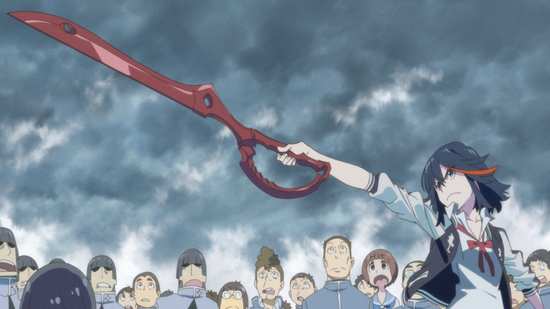
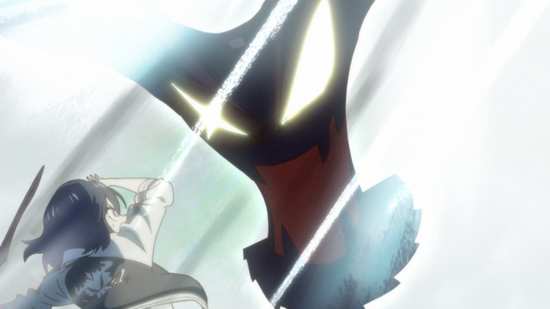
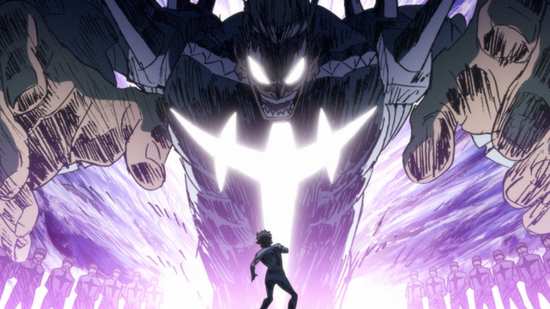


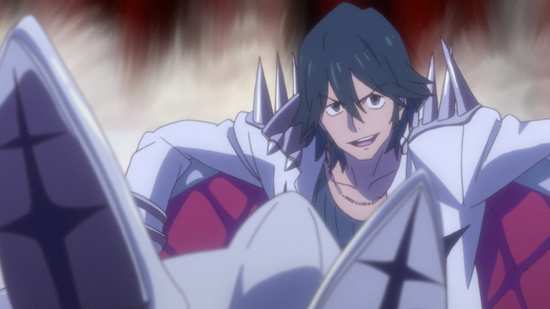

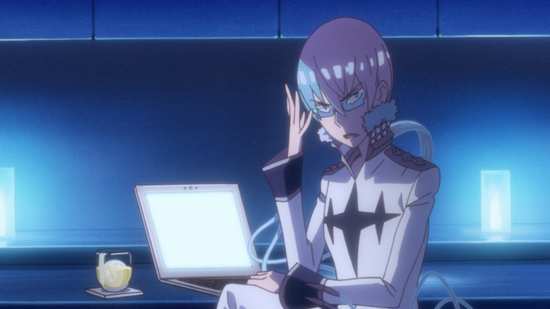
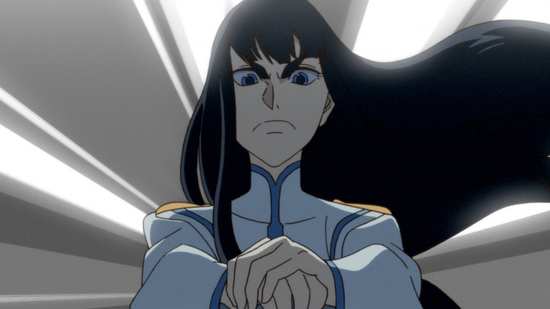
Your Opinions and Comments
Be the first to post a comment!